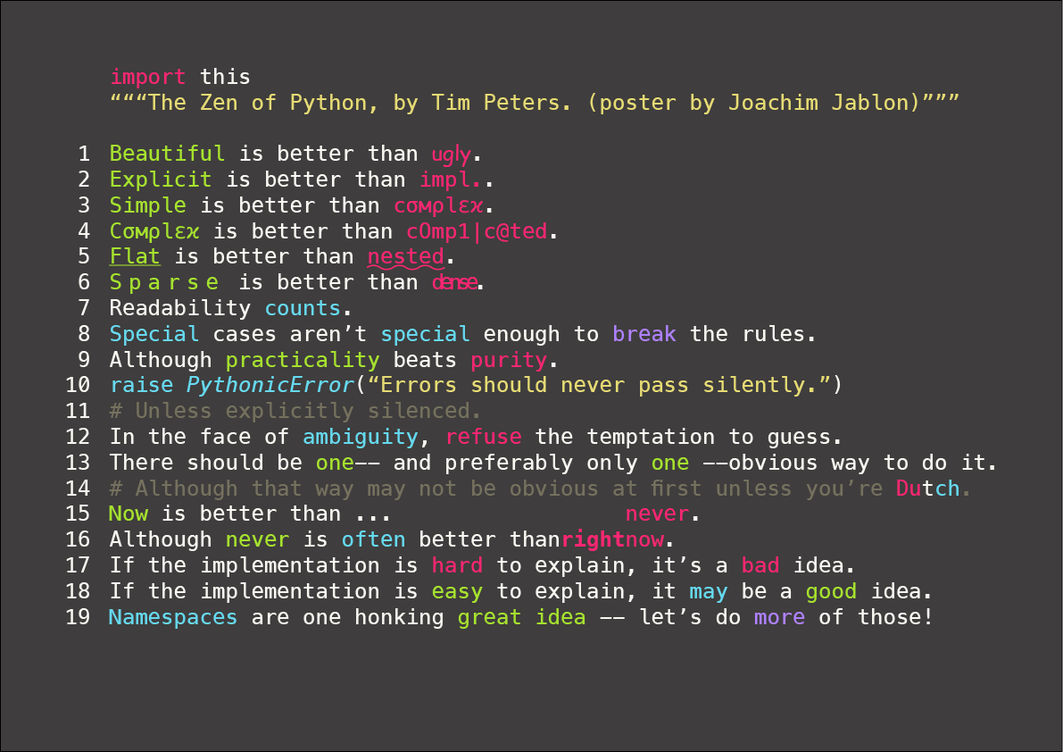Python
programming languages that we learn
Contents
Python Language

A Multipurpose language
Python is popular, high-level, well known because of its simplicity and readability. If you are a seasoned developer or just starting on the journey, Python has something to offer. Guido Van Rossum creates Python in the late 1980s and since then has gained popularity, in the area of the Data Science the language is a major. The language combines simplicity, the clean and easy-to-understand syntax.
Basic Sintax
Python syntax:
- variables
my_var = 42
- indentation
x = 11
if x > 10:
print(f"{x} is greater than 10")
- comments
# This is a single-line comment
"""
This is
a multi-line
comment
"""
Pros
- Readbility: highly readable, used indentation to define code blocks.
- Versatility: it can be used in different areas like, web development, data analysis, scietific computing, artificial inteligence, and much more.
- Vast Library Support: the ecosystem is huge, vast of libraries and frameworks, some famous as Numpy, Django, Scipy, Flask, Pandas, etc.
- Cross Platform: there are compatibility with the major operating systems, making it a flexible choice for multi-platform development.
- Active Community: The Python community is active and supportive, offering an amazing environment for incomers, with documentations for learners and the events are amazing.
Cons
- Performance: Python is not as fast as some low-level languages, like C, C++ or Rust. Despite that it’s suitable for most applications.
- GIL: The global interpreter lock can limit Python’s abillity to fully uses the multi-core processors in multi-threaded applications. There are some news about the release of the GIL for Python 3.12, let’s follow the next steps of this PEP.
- Mobile App Development: is not the primary language for mobile apps.
Minimal program
print("Hello, World!")
Basic hello world
The minimal examples is the basic hello world.
print("Hello, World!")
